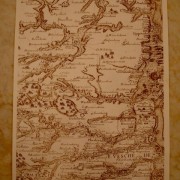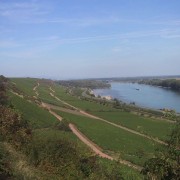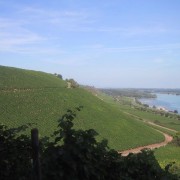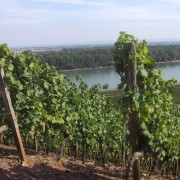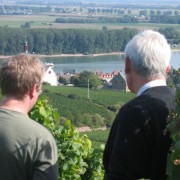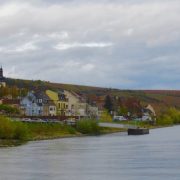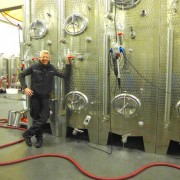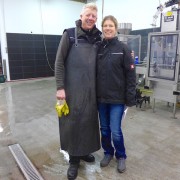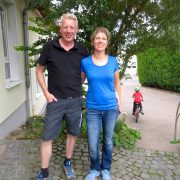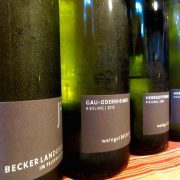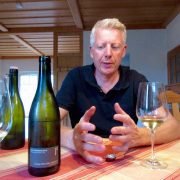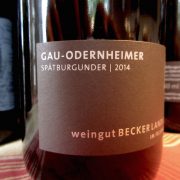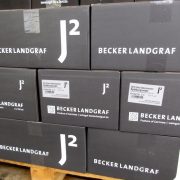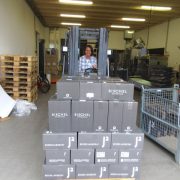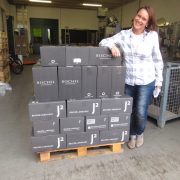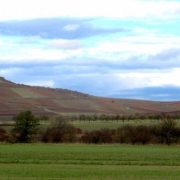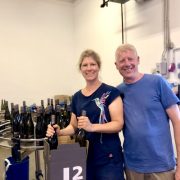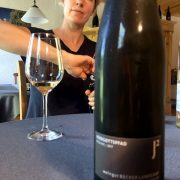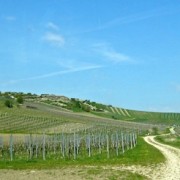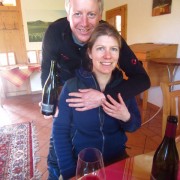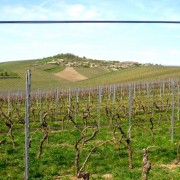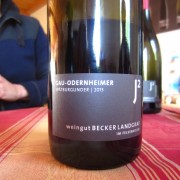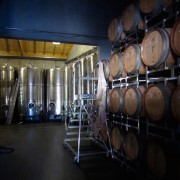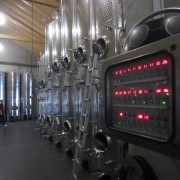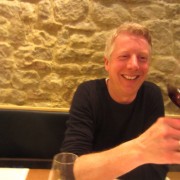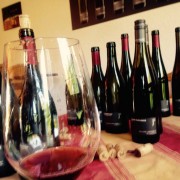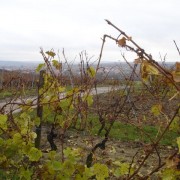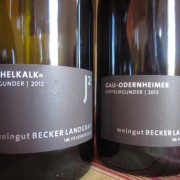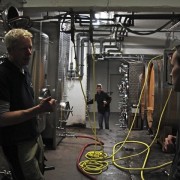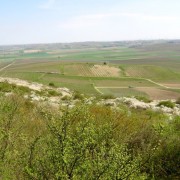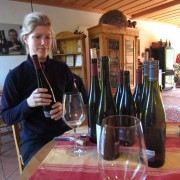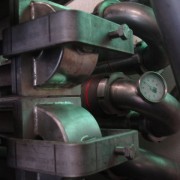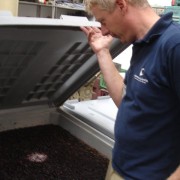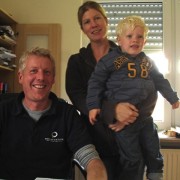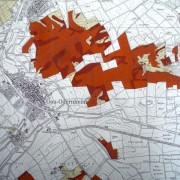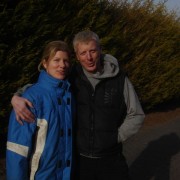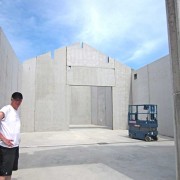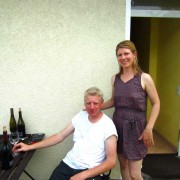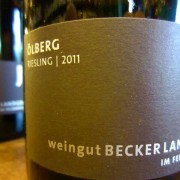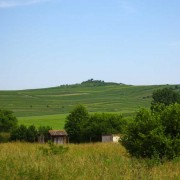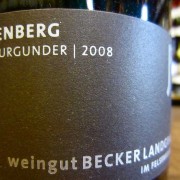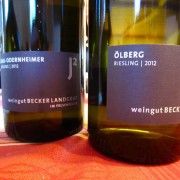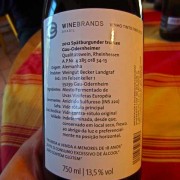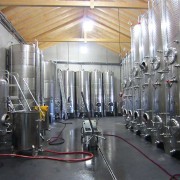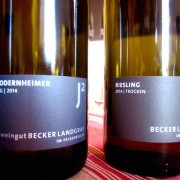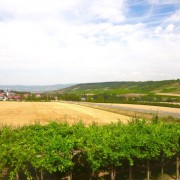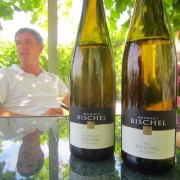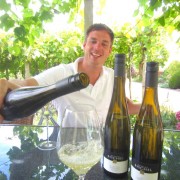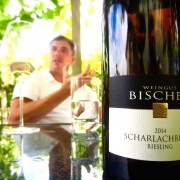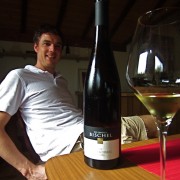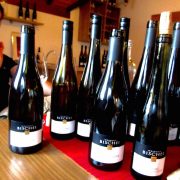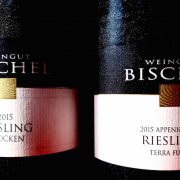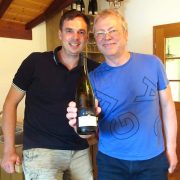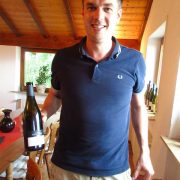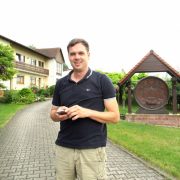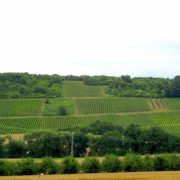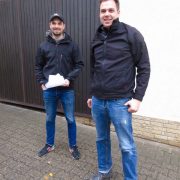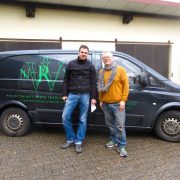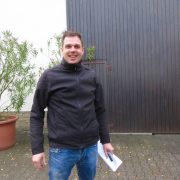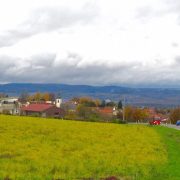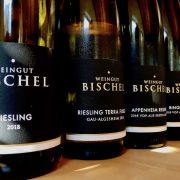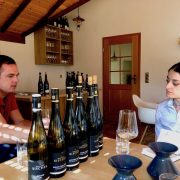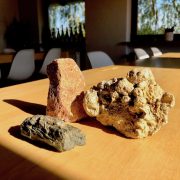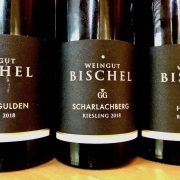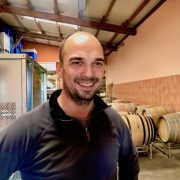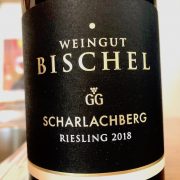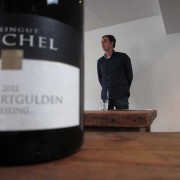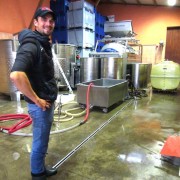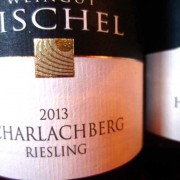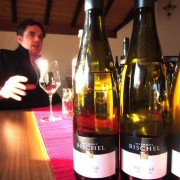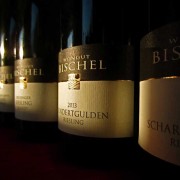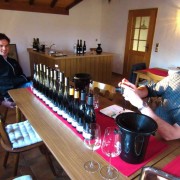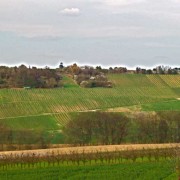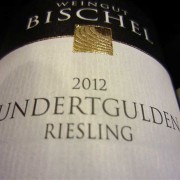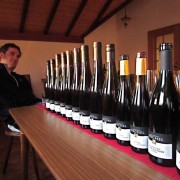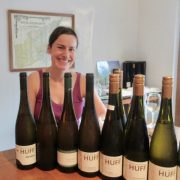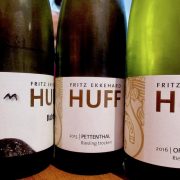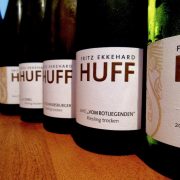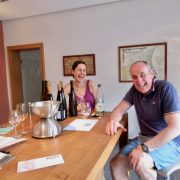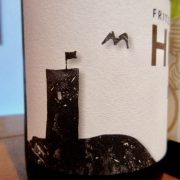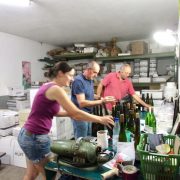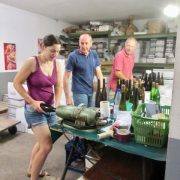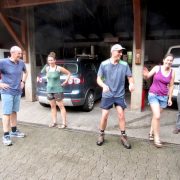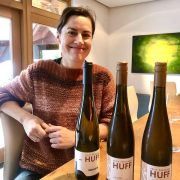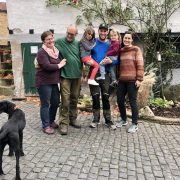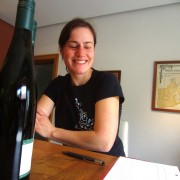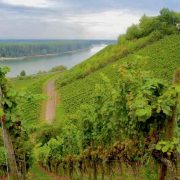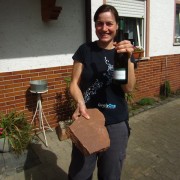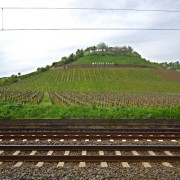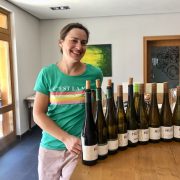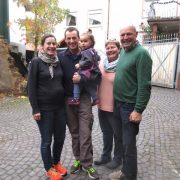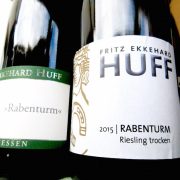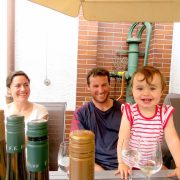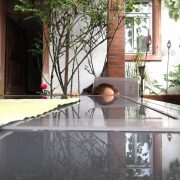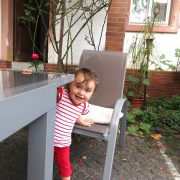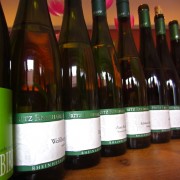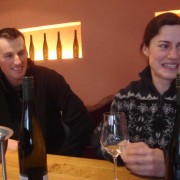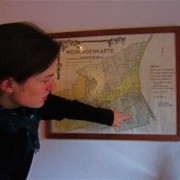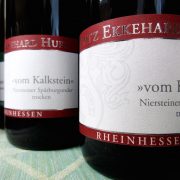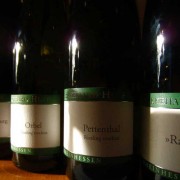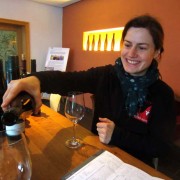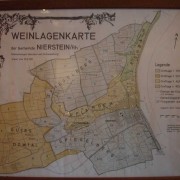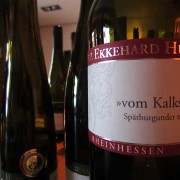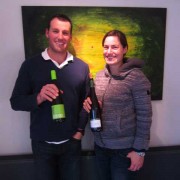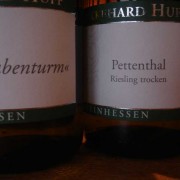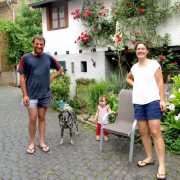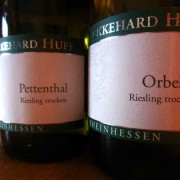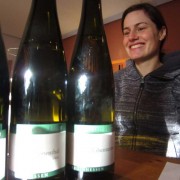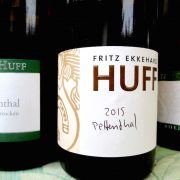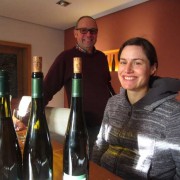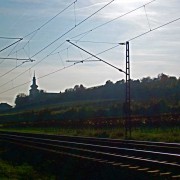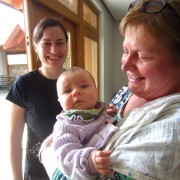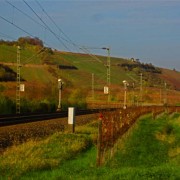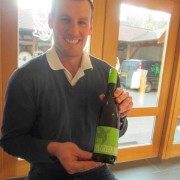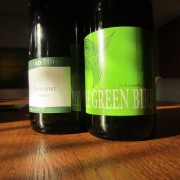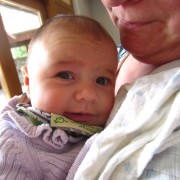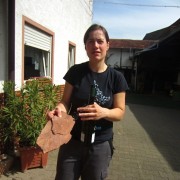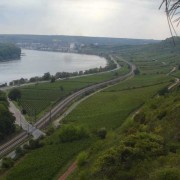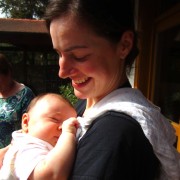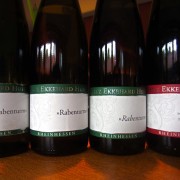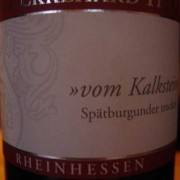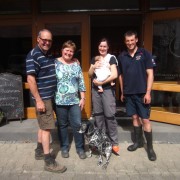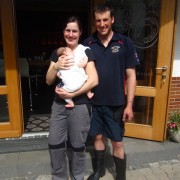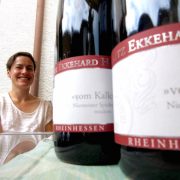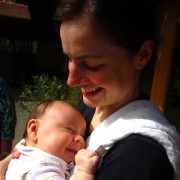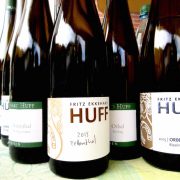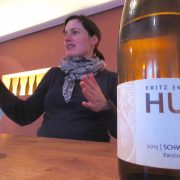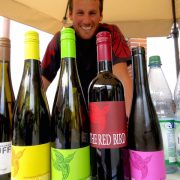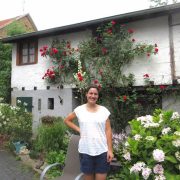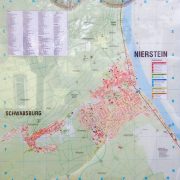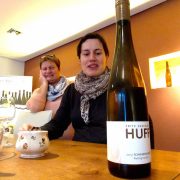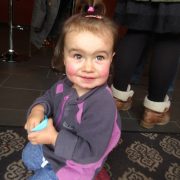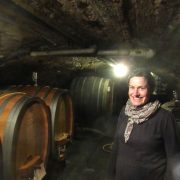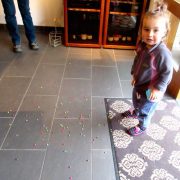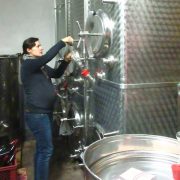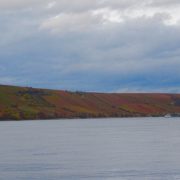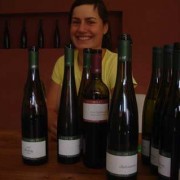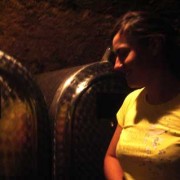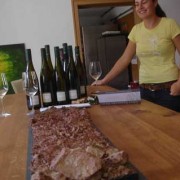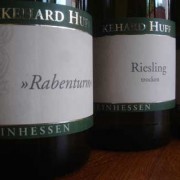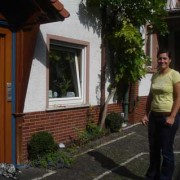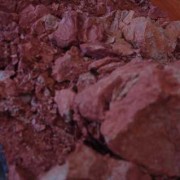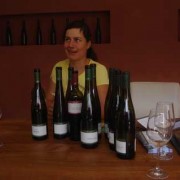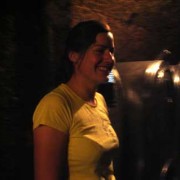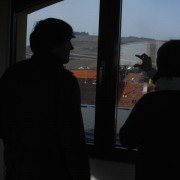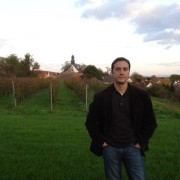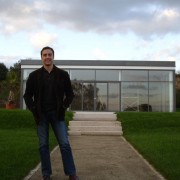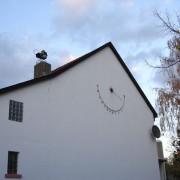From the ashes of Liebfraumilch rises the twin-headed Phoenix of dry Riesling and Pinot Noir! The flat, fertile landscape of Rheinhessen is where it all went south for German wine. In the 60s, when the market for wine started in earnest, they said, “you want lots of sweet wine for not much money? We can do that.” Decades later, the image of German wine is shaking off Blue Nun and Black Tower and Goldene Oktober.
Becker-Landgraf (Gau-Odernheim)
This was another tip from Ursula Heinzelmann. Great Pinot from Rheinhessen? Do our ears deceive us? Our mouths say yes!
When Johannes Becker and Julia Landgraf married, they combined their respective family wineries and determined to make top-class, cool-climate, dry Riesling and silky Pinot Noir, slap bang in the rural centre of the region. They have already outgrown the basement below their house where they scuttle around with bended heads, checking their gleaming tanks and a handful of barrels. Julia’s Dad has a business making stainless steel tanks. When we rocked-up, they were pressing and fermenting their harvest in a tent. Never mind “garage-iste”, here’s the first “tent-iste” we have come across.
When we brought back Johannes and Julia’s Spatburgunder in September 2009, it sold out so fast we had to beg them for everything they had left. Which wasn’t much. This year we were knocking on their door pretty much the day after bottling. Johannes and Julia make top-class, cool-climate, silky Pinot Noir from the middle of the most unlikely part of Rheinhessen. It does help that Julia’s Grandfather had some old parcels of vines on the only hill for miles around, just outside their village of Gau-Odernheim.
Bischel (Appenheim) ORGANIC
In late 2013 The Winery’s David Motion was involved in a Dragon’s Den type German Wine event and Bischel was one of the clear winners. Their prize? An order from us.
Based in Appenheim, not far from Bingen where the Riffels are based (and where they share some vineyards in the Scharlachberg), the young Runkel brothers, Christian and Matthias, took over the family winery and have been turning heads in Germany. The grapes of the basic trocken come from younger vines on chalky soil in Appenheim and Gau-Algesheim. No expense is spared and everything is done by hand. Wild yeasts and long lees contact give the wine added texture. Although the richness and minerality would seem to contradict the lab stats, the wine is bone dry.
As it turns out, it wasn’t just one order – Bischel are now a fixture on our shelves.
Fritz Ekkehard Huff (Nierstein-Schwabsburg)
We had been on the lookout for a great Nierstein ever since our beloved St Antony winery changed hands in 2005. A dinner in 2011 at the excellent Schloss Sörgenloch restaurant deep in the Rheinhessen countryside ended in intense conversation with the owner, Thomas. Nierstein? Try this Fritz Ekkehard Huff. Yum. When we phoned shortly afterwards, the daughter Christine said, “that’s amazing, I only dropped a single sample bottle off at Sörgenloch!” Fate. Christine was fresh out of Geisenheim, the top German wine college and was already making bright, minerally, dry Riesling from the red cliffs overlooking the Rhine at Nierstein.
She has had a busy last decade; increasingly taking control of the winery; meeting and marrying Kiwi Jeremy Bird (who came to help with the 2009 harvest and never left); having two babies; working tirelessly in the vines and cellar to create wonderful, finely-judged dry Rieslings from the red cliffs (der Roter Hang) around the town.
Der Roter Hang – the red slate and sandstone cliffs: red from iron oxide, which can often infuse Riesling with some marked spicy and tropical notes.
The town of Nierstein overlooks the Rhine on the strip between Mainz and Worms and historically has always been considered to be in the top band in the hierarchy of Rheinhessen’s vineyards.
Cliffs run from Nackenheim, below Mainz and south as far as Oppenheim. From Nackenheim to Nierstein the cliffs are red. Many of the Grand Cru vineyards directly overlook the Rhine eastwards until the town of Nierstein itself, at which point the ridge curves inland, above the town and westwards to Schwabsburg, the picturesque suburb where the Huff family have lived for generations. This extended slope is full south-facing, enjoying the shelter of a valley and full exposure to the sun.
It is probably fair to say that, difficult as it is to choose, Rabenturm (Ravens’ Tower) is Christine’s favourite vineyard. It is a parcel, the so-callet Filetstück (the fillet piece/best part) within the Schloss Schwabsburg vineyard at the base of old castle ruins. Many of the vines are 50 years old and produce small berries with intense aromas.
Some precious small parcels have been discreetly added to the family’s vineyard holdings including Niersteiner Pettenthal. Winding back in time to the St Antony estate in Dr Alex Michalsky’s day, Pettenthal was always our favourite of their single vineyards. Is it possible that this small 0.25 hectare parcel of 32 year-old vines came from St Antony? Christine suddenly becomes uncharacteristically taciturn and refuses to be drawn. “I can’t say!” Whatever the origin, Christine’s Pettenthal is exquisite.
Kuhling-Gillot (Bodenheim) ORGANIC
The Winery’s David Motion was recently involved in a Dragon’s Den type German Wine event and there were two clear winners, Bischel and Kuhling-Gillot. Both are now freshly in the UK and on our shelves.
Before marrying Oliver Spanier of Battenfeld-Spanier, another Rheinhessen star (see entry below), Carolin was born Kuhling-Gillot. Her family has wonderful vineyards overlooking the Rhine on Rheinhessen’s eastern flank in the legendary villages of Oppenheim, Nackenheim and Nierstein. Many of their vineyards are on the Roter Hang (the red cliffs), thick with iron oxide which imparts the wines with an almost tropical spice and intensity.
Oliver now makes the wines for both Kuhling-Gillot and Battenfeld-Spanier. Their dry Rieslings are benchmarks for the region. Bold, opulent, powerful. We also managed to scoop up a handful of bottles of the Burgweg Spatburgunder GG. Yum.
Carolin and Oliver live in Hohen-Sulzen, south Rheinhessen, with their boys, Louis and Leopold.
Riffel (Bingen) ORGANIC
Bingen is on a massive corner on the Rhine, opposite Rudesheim. It is at the north-western edge of the region where four wine-growing regions meet. Rheinhessen Nahe, Mittelrhein and the Rheingau. Carolin and Erik Riffel have vines in the full south-facing Bingen Scharlachberg vineyard. Millions of years ago the Rhine looped below it, which explains why the wines are more Rheingau in style than Rheinhessen. The Riffels make electric, dry, modern Riesling which express the steep mineral-laden slate it is grown on and the very late October harvesting which extracts maximum ripeness.
We owe thanks to the German Food Writer Ursula Heinzelmann for the tip. She was researching a piece about the wines Goethe drank and heard about the Scharlachberg. Thanks Ursula!
Battenfeld-Spanier (Hohen-Sulzen) ORGANIC
We hammered down the Autobahn into the Wonnegau, the deepest darkest south-eastern corner of Rheinhessen. Until recently this was the least-favoured spot in Germany’s least-favoured wine region. Now it is alive with hot-blooded, hot-headed young men. We already know Stefan Winter, Jochen Dreissigacker and Klaus-Peter Keller. Now here’s Hans-Oliver Spanier, the young owner of Battenfeld-Spanier who makes succulent modern dry Rieslings, stylish Sekt and Gruner Silvaner, the local speciality. Why is there a pram on his chimney? “Some mates of mine put it up there when I got married and I haven’t figured out how to get it down yet!
